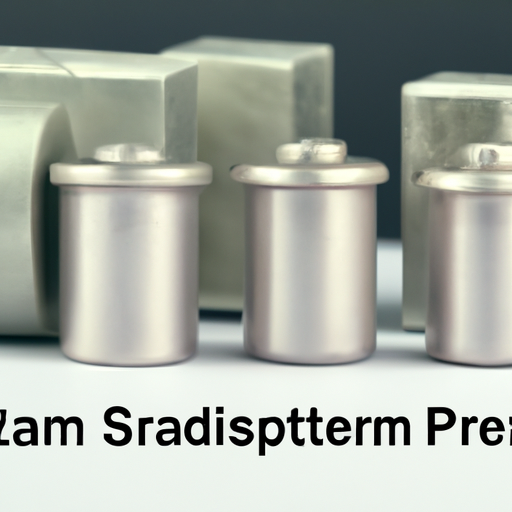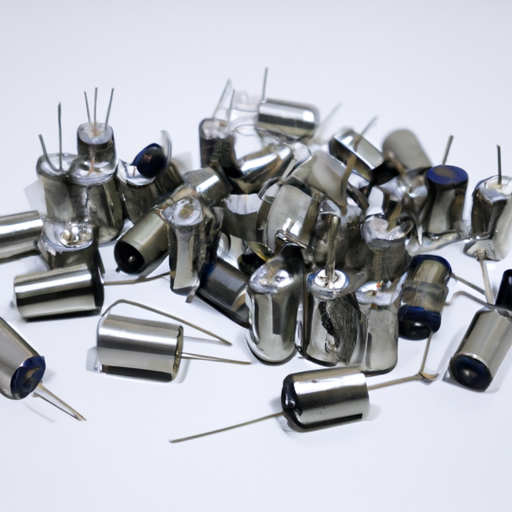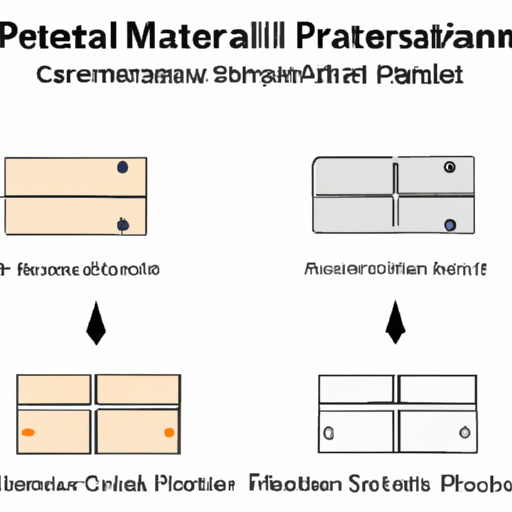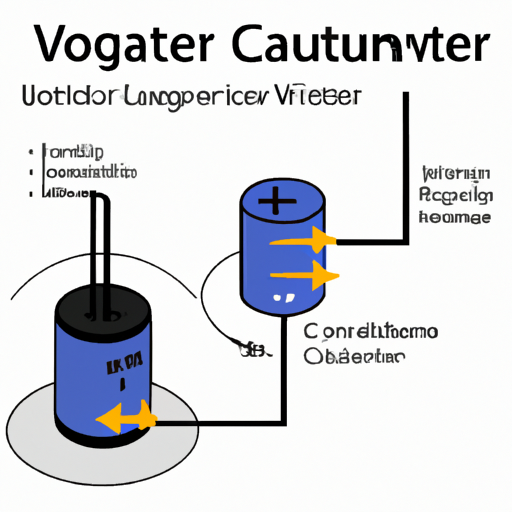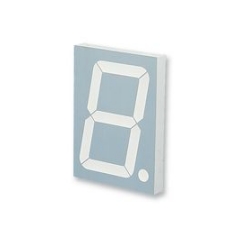What is the production process of mainstream parallel plate capacitors?
The Production Process of Mainstream Parallel Plate Capacitors
I. Introduction
Parallel plate capacitors are fundamental components in electronic circuits, playing a crucial role in energy storage and signal processing. These capacitors consist of two conductive plates separated by a dielectric material, allowing them to store electrical energy in an electric field. Their simplicity and effectiveness make them a staple in various applications, from consumer electronics to industrial machinery. Understanding the production process of these capacitors is essential for appreciating their significance in modern technology.
II. Materials Used in Parallel Plate Capacitors
A. Conductive Plates
The conductive plates of parallel plate capacitors are typically made from materials such as aluminum or copper. Aluminum is favored for its lightweight and cost-effectiveness, while copper is chosen for its superior conductivity. The choice of material can significantly impact the capacitor's performance, including its capacitance and resistance to corrosion.
To enhance performance, these plates often undergo coating and surface treatment processes. For instance, anodizing aluminum can improve its durability and resistance to oxidation, ensuring a longer lifespan for the capacitor.
B. Dielectric Materials
The dielectric material is crucial in determining the capacitor's capacitance and voltage rating. Common types of dielectrics include ceramic, plastic, and electrolytic materials. Ceramic dielectrics are known for their stability and high dielectric strength, making them suitable for high-frequency applications. Plastic dielectrics, such as polyester or polypropylene, offer flexibility and are often used in consumer electronics. Electrolytic capacitors, which use a liquid electrolyte, provide high capacitance values in a compact form but are polarized and have specific application limitations.
When selecting dielectric materials, factors such as temperature stability, dielectric constant, and breakdown voltage are considered to ensure optimal performance.
C. Additional Components
In addition to the plates and dielectric, parallel plate capacitors require leads and terminals for electrical connections. These components are typically made from conductive metals and must be soldered or attached securely to ensure reliable performance. Encapsulation materials, such as epoxy or resin, are also essential for protecting the capacitor from environmental factors like moisture and dust, which can degrade performance over time.
III. Design Considerations
A. Capacitance Calculation
The capacitance of a parallel plate capacitor is determined by the formula:
\[ C = \frac{\varepsilon \cdot A}{d} \]
where \( C \) is the capacitance, \( \varepsilon \) is the permittivity of the dielectric material, \( A \) is the area of one of the plates, and \( d \) is the distance between the plates. Factors influencing capacitance include the choice of dielectric material, the size of the plates, and the spacing between them.
B. Size and Form Factor
Capacitors come in various sizes and form factors, ranging from tiny surface-mount devices to larger through-hole components. Standard sizes are often dictated by industry standards, but custom designs can be created to meet specific application requirements. The form factor can affect the capacitor's performance, heat dissipation, and integration into electronic circuits.
C. Tolerance and Reliability Requirements
Capacitors must meet specific tolerance levels to ensure they function correctly within a circuit. Tolerance refers to the allowable deviation from the nominal capacitance value. Reliability is also critical, as capacitors are often subjected to varying temperatures, voltages, and frequencies. Manufacturers must adhere to strict quality control measures to ensure their products meet these requirements.
IV. Production Process
A. Step 1: Material Preparation
The production process begins with material preparation. Manufacturers source high-quality conductive and dielectric materials, ensuring they meet industry standards. Quality control checks are performed to verify the integrity of the materials before they are cut and shaped into the required dimensions for the conductive plates.
B. Step 2: Dielectric Layer Application
Once the plates are prepared, the dielectric layer is applied. This can be done through various methods, including coating or layering. For instance, in ceramic capacitors, the dielectric material is often applied as a slurry and then dried and cured to form a solid layer. The curing process is critical, as it ensures the dielectric achieves the desired properties, such as strength and stability.
C. Step 3: Assembly of Plates
After the dielectric layer is applied, the assembly of the plates takes place. This step involves aligning the conductive plates with the dielectric layer in between. Spacers may be used to maintain the correct distance between the plates, ensuring optimal capacitance. Adhesives may also be applied to secure the layers together, providing additional stability.
D. Step 4: Termination and Connection
With the plates assembled, the next step is termination and connection. Leads are soldered or attached to the conductive plates, ensuring a reliable electrical connection. This step is crucial, as any failure in the connection can lead to performance issues or complete failure of the capacitor.
E. Step 5: Encapsulation and Protection
The final step in the production process is encapsulation. The assembled capacitor is coated with protective materials, such as epoxy or resin, to shield it from environmental factors. This encapsulation is vital for ensuring the longevity and reliability of the capacitor, especially in harsh operating conditions.
V. Quality Control and Testing
A. Electrical Testing
Quality control is a critical aspect of capacitor production. Electrical testing is performed to measure capacitance and ensure it falls within specified tolerances. Leakage current testing is also conducted to assess the capacitor's ability to hold charge without significant energy loss.
B. Mechanical Testing
Mechanical testing is equally important, as capacitors must withstand physical stresses during operation. Durability and stress tests are performed to evaluate the capacitor's performance under various conditions, ensuring it can handle the demands of its intended application.
C. Compliance with Standards
Manufacturers must comply with industry standards, such as those set by the International Electrotechnical Commission (IEC) and Underwriters Laboratories (UL). Compliance ensures that the capacitors meet safety and performance criteria, providing assurance to consumers and manufacturers alike.
VI. Challenges in Production
A. Material Variability
One of the significant challenges in capacitor production is material variability. Differences in material properties can affect the performance of the final product, making it essential for manufacturers to maintain strict quality control throughout the production process.
B. Precision in Manufacturing
Precision is crucial in capacitor manufacturing, as even minor deviations in dimensions can lead to significant changes in capacitance and performance. Advanced manufacturing techniques and equipment are necessary to achieve the required precision.
C. Environmental Considerations
Manufacturers must also consider environmental factors, such as waste management and energy consumption. Sustainable practices are becoming increasingly important in the industry, prompting manufacturers to seek eco-friendly materials and processes.
VII. Future Trends in Parallel Plate Capacitor Production
A. Advances in Materials Science
The future of parallel plate capacitor production is likely to be shaped by advances in materials science. Researchers are exploring new dielectric materials that offer higher capacitance values and improved thermal stability, which could lead to more efficient and compact capacitors.
B. Automation and Smart Manufacturing
Automation and smart manufacturing technologies are also set to revolutionize capacitor production. These advancements can enhance precision, reduce production costs, and improve overall efficiency, allowing manufacturers to meet the growing demand for capacitors in various applications.
C. Sustainability Initiatives
Sustainability initiatives are becoming a priority in the electronics industry. Manufacturers are increasingly focusing on reducing their environmental footprint by adopting eco-friendly materials and processes, as well as implementing recycling programs for end-of-life capacitors.
VIII. Conclusion
The production process of mainstream parallel plate capacitors is a complex and meticulous endeavor that involves various materials, design considerations, and manufacturing steps. From the careful selection of conductive and dielectric materials to the rigorous quality control measures, each stage is critical to ensuring the performance and reliability of the final product. As technology continues to evolve, so too will the methods and materials used in capacitor production, paving the way for innovations that enhance the capabilities of electronic devices. The future of parallel plate capacitors looks promising, with advancements in materials science, automation, and sustainability driving the industry forward.
IX. References
- Academic Journals
- Industry Reports
- Manufacturer Guidelines
This blog post provides a comprehensive overview of the production process of mainstream parallel plate capacitors, highlighting the importance of each step and the challenges faced by manufacturers. By understanding this process, readers can appreciate the role these components play in modern electronics and the ongoing innovations that shape their future.

